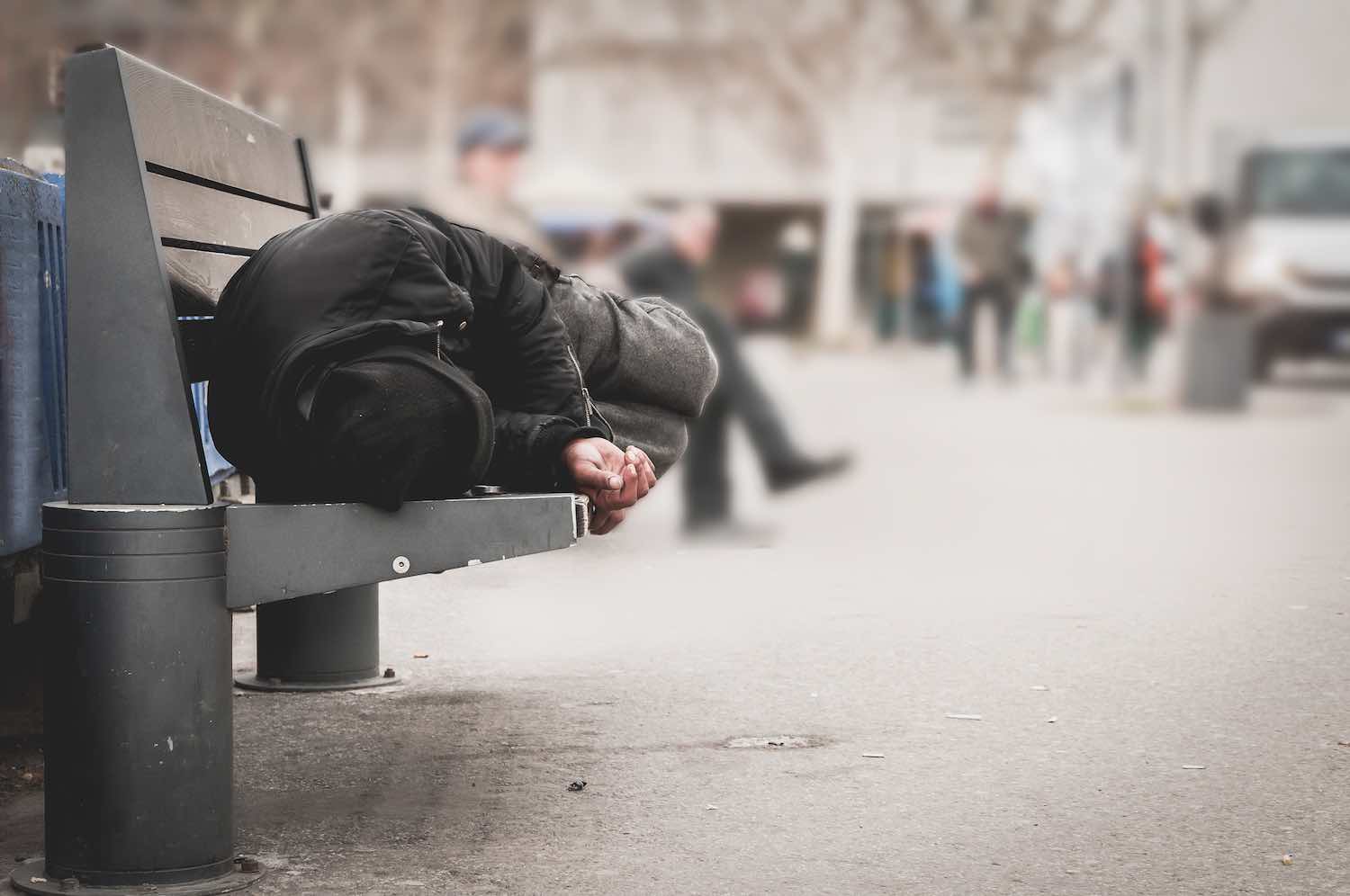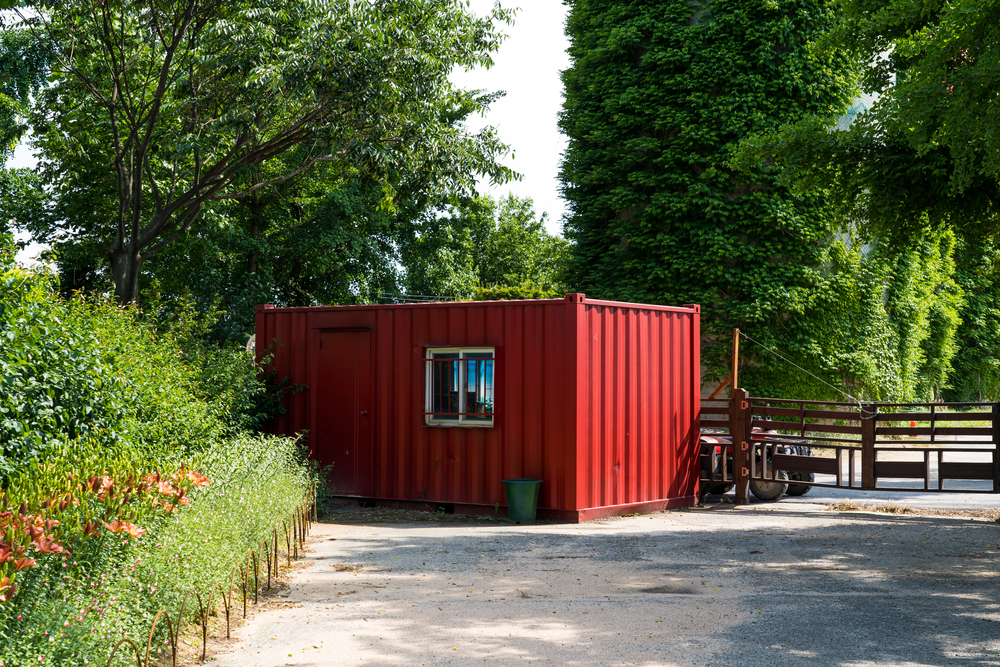(Editor’s note: This story is being co-published with The Giving List.)
ImpactAlpha, June 2 – As a parting challenge to his successor, outgoing Los Angeles Mayor Eric Garcetti announced in April the settlement of a longstanding lawsuit over homeless housing.
Their responses to the homelessness crisis may well determine the winner of next week’s primary election for mayor of the nation’s second-largest city. The frontrunners are Rick Caruso, a successful developer, and U.S. Rep. Karen Bass, who made Joe Biden’s short list for vice president.
The legal agreement, if ratified by the City Council and the presiding judge, will compel the city to move 60% of its nearly 29,000 unsheltered residents into rooms over the next five years. The price tag: between $2.4 and $3 billion.
That will leave the next mayor with the immediate question of how to house 17,400 people. But the city’s next leader has a broader opportunity as well to create a model for the kind of incentives and partnerships that can draw in private capital to finance solutions at scale.
That means controlling development costs, de-risking investments and, yes, increasing public subsidies. Below, I’ll draw a road map of strategies that Bass and Caruso could run on in the November election and implement once sworn in, and that other cities could emulate.
Pareto optimality
First, I want to share the higher aspiration: changing the energy of money from extraction to regeneration.
To explore that shift, I turned to Jonathan Rose, whose Jonathan Rose Companies has a long track record of building affordable, and some homeless, housing across the country, and generating mid-teens returns for his investors.
“What we need is an ecosystem of solutions,” Rose says. “And that ecosystem is healthiest when it includes government and some regulations. It includes public finance, private finance and private businesses. It includes not-for-profits and social services and the healthcare system. And it’s a weaving of all these together.”
Remember Rose is a businessman, bound by what he calls “the laws of gravity in real estate, where you need more income than expenses and debt service.” But within those confines, the Rose Companies has, since 1989, provided thousands of extremely low-income tenants upgraded and greened buildings, which often also serve as hubs for social services and civic life.
Rose boils this down to the concept of Pareto Optimality, wherein an economy achieves peak efficiency. While efficiency doesn’t denote equality, it must be part of any equation to forestall the rolling human catastrophe that is homelessness.
Disturbing truths and root causes
Let’s start on the streets of Los Angeles, where I live.
According to the last count in 2020, there were more than 66,000 unhoused Los Angeles County residents. A recent analysis by the RAND corporation found that half of the unhoused individuals were Black, higher even than the dismaying 39% found in the federal Department of Housing and Urban Development’s latest analysis. Worse still, L.A. County’s public health department found that nearly 2,000 homeless Angelenos had died between April 2020 and March 2021.
This deadly manifestation of economic and racial inequality is most concentrated in wealthy cities, betraying a particular sort of moral decay: greed. L.A. County has more than twice the median household income of the city of Detroit. But despite this relative wealth, L.A. has almost twice Detroit’s prevalence of homelessness.
More than the worn tropes about what creates homelessness – substance abuse, mental health, generous social services or good weather drawing people in – the key force driving people onto the street are tight, pricey housing markets. To get the picture, read Gregg Colburn and Cayton Page Aldern’s “Homelessness is a Housing Problem.”
The $3.5 billion split
Giving L.A.’s unhoused succor need not be that complex. It just requires building lots of housing very fast.
As I have argued in other publications, such efficiency is contingent on cohering the “ecosystem of solutions” referenced by Rose. Using the framework of the L.A. settlement as the example – $2.4 billion over five years, to create 17,400 beds – I will describe how it’s possible.
Developing a continuum of housing with both new and “preserved” rental property, mixed with the efficiencies enumerated below, drives the average per-door cost to $200,000 for dorm-like housing, studios and even one-bedrooms. At that rate, 17,400 rooms will cost $3.5 billion. The gap is $1.1 billion, the size of a large but not uncommon real estate fund that any old qualified investor could find on the private market.
So how could the City of Los Angeles use its $2.4 billion to draw $1.1 billion in private capital? It shouldn’t be hard.
The three central tools:
- development cost controls,
- financial de-risking instruments, and
- publicly funded subsidies.
Development cost controls
“If I was mayor, I would start by using the thousands of acres of city-owned land that is underutilized and immediately build temporary communities for all 17,400 people,” says Elizabeth Collet Funk, founder of Dignity Moves, a nonprofit quickly standing up temporary and more permanent housing for people experiencing homelessness. In short order Collet Funk says that she would develop housing that could support an additional 8,700 people.
Dignity Moves says it can build temporary housing at $40,000 a door on parking lots. Permanent housing units using modular construction and excluding the cost of land run $170,000.
For $2.44 billion, at the lower end of the City’s estimate to satisfy the lawsuit, Collet Funk says she could build all 17,400 temporary units and the additional 8,700 permanent units she is calling for. “This really can be done, with the right community and government will.”
While it sounds like Funk has got it covered, others further corroborate the thesis.
In 1994, Ryan Olsen, like so many young people coming out of foster care, found himself living on the streets. For him it was Long Beach, Calif., where The Red Hot Chili Peppers song, “Under the Bridge,” became his anthem. Olsen now runs a Portland-based modular construction company called Quantum Assembly.
“I experienced all this stuff,” he says. “That’s why it matters more to me.”
Using recycled steel, Olsen says that the buildings he is creating are “literally bullet proof.” They “don’t rot, mold or mildew. No paint for 40 years. Zero maintenance. That’s a huge differential over the wood-made junk they build today.” He says an insurance agent once told him the buildings are “an underwriter’s w#t dream,” because of their durability.
In addition to driving down ongoing maintenance and insurance liabilities, Quantum’s three-story, 12-unit, 2-bedroom buildings cost roughly $2 million, depending on location and site condition – bringing the per unit cost to about $180,000.
Quantum plans to reveal its initial line of housing options in July. But modular has already hit the ground in L.A. County
This spring, I visited a new homeless housing development in El Monte, a largely Latino Community in the San Gabriel Valley east of Los Angeles. The site’s three buildings are built out of 8-foot by 8-foot engineered plastic modules, with curved-corner panels, like you’d see on airplane windows. The project is the first by LifeArk, a modular housing developer.
The development can sleep 18, and was built at $190,000 a door, including the cost of the land. CFO Paul Cho says that once the expansion of LifeArk’s central California factory is complete and he can store more inventory, the company will be able to build similar projects in months, driving down costs.
Good old apartment building construction can also pencil out at near $200,000 a door. Late last year, L.A.-based impact investing firm SDS Capital Group closed its $150 million Supportive Housing Fund, which aims to build 1,800 units statewide, including 1,200 in L.A.
SDS CEO Debbie La Franchi says that there are at least “20 factors” that make it possible for her fund to build permanent supportive housing at $225,000 a door.
“At the core of the savings is reducing the time to close and construct,” La Franchi says.
Because SDS provides from 90% to 97% of the cash, its housing partner RMG Housing Construction has “no cost of raising” capital. That allows the fund to underwrite and close a transaction with 60 days, and complete construction in 24 months, she says. The efficiency of having only two players keeps legal costs low.
As a kicker, SDS has secured free land-lease deals with churches on three of its seven projects thus far. Given that religious service attendance and overall charitable giving to religious organizations in America have steadily declined in the past two decades, one can imagine more church-based opportunities in the future.
Financial de-risking
Fearless fiduciary responsibility is just not a thing. Private investors are always looking to mitigate risk.
In affordable and homeless housing, risk is offset on the back-end of deals through publicly funded rental subsidies, which we will get to in a moment.
On the front end, loan guarantees go a long way in assuaging investors concerns. The two tranches of capital most ripe for such instruments in housing are the woefully underutilized balance sheets of charitable foundations – which hold an estimated $1 trillion in assets nationwide – and the government.
The Community Investment Guarantee Pool, launched in 2019, has pulled together major names in philanthropy and impact investing – the Chan Zuckerberg Initiative, Arnold Ventures, the Annie E. Casey and Kresge foundations, to name a few – to offer loan guarantees on a range of socially-conscious private enterprise.
The pool ended 2021 with a housing portfolio of over $15 million in guarantees, “which are expected to leverage another $131 million of catalytic capital for a range affordable rental housing use cases,” according to a February press release.
Jason Riffe runs the United Way of Greater Los Angeles’ Affordable Housing Initiative. The initiative is on to its second fund, this one for $100 million, which Riffe says can invest in developments that bring renters carrying subsidies into “high opportunity communities.”
It’s “a particularly tough challenge,” he says. Things would go a lot faster with loan guarantees.
“With a loan guarantee from a pension fund, philanthropic organization, endowment, or corporation that has an investment grade credit rating,” he says, the fund “would be able to meaningfully reduce its cost of capital deployed by up to 2%. Additionally, our initiative could unlock $500 million in investor capital for our revolving fund over the next 12 months.”
Given the scale of the challenge, imagine what would happen if municipalities, states and the feds could offer loan guarantees. Precedent suggests a potential tidal wave of new housing development.
Gary Painter, a University of Southern California researcher focused on social impact, had to look at infrastructure policy to find an analogy applicable to housing. Painter points to the Transportation Infrastructure Finance and Innovation Act of 1998, which drew billions in private investment to build highways, bridges and tunnels by providing loan guarantees, low-interest financing and lines of credit.
Why couldn’t such a strategy be deployed draw similar billions to end homelessness?
Recession-proof rents
Of the compelling reasons to invest in affordable and homeless housing is that many, if not most, tenants come with government-backed security. The subsidies include Section 8 Housing Vouchers, Supplemental Social Security Income and even extended foster care benefits for youth up to age 21.
The problem is, there simply aren’t enough subsidies to meet the need. L.A.’s Section 8 program pays local landlords about $600 million a year in rents. But wait lists are years-long, and about one-third of people given a new voucher each year won’t be able to find a unit in 180 days, according to Section 8 Director Carlos VanNatter.
When new subsidies are thrown into the mix, the market responds.
Through its launch in 2014 until the end of 2021, L.A. County’s Flexible Housing Subsidy Pool housed 9,259 people experiencing homelessness at a pace of 127 a month. By promising additional subsidies, and guarantees for renters, the subsidy pool snapped up available housing from wary landlords, and spurred new construction by promising developers years of uninterrupted rents.
Tom De Simone is the CEO of Genesis LA, a community development finance institution, that offers affordable debt to housing projects in parts of L.A. hardest hit by the crisis. According to De Simone’s math, giving vouchers of $1,500 per month to the 66,000 people experiencing homelessness in the county would cost about $1.2 billion a year.
“Divide $1.2 billion by 10 million L.A. County residents and that is only $120 per resident per year or $10 per month,” De Simone says. “This feels like this is the kind of thing the state could put in place as a ‘universal’ voucher for California to end homelessness.”
Hold up Tom, we started this thing just trying to help the city of L.A. provide shelter to 17,400 Angelenos experiencing homelessness. But while we are at it…
Arsenal of humanity
The frontrunners in L.A.’s battle for City Hall both have issued plans for attacking the homelessness crisis.
Bass’ plan includes using city-owned land, partnering with religious organizations for additional land deals and maximizing existing housing vouchers.
“She will work with the federal government to cut through the red tape, and expand the availability and accessibility of housing vouchers,” the plan reads. “And she will increase incentives to landlords so that more are willing to accept them.”
One way to satisfy Bass’ promise would be to pour all $2.4 billion into the flex pool or the Section 8 program. That would give 17,400 unhoused Angelenos six years and eight months with $1,500 a month in subsidies.
Caruso’s plan focuses on driving the cost of new units below $350,000, quadrupling the number of “tiny homes,” converting city land and leveraging its balance sheet.
“The City’s borrowing power is immense and with the right business mind at the helm, we can easily and quickly purchase land, lease it to developers to cover the debt financing, and immediately incentivize fast construction of housing and shelter,” the plan reads. “By eliminating the carrying costs for the private sector, we can spur new development very quickly.”
Caruso is right about using the city’s immense wealth to speed financing. The Community Investment Guarantee Pool claims that its housing fund leveraged 8.7 times the value of the guarantee in other investments. Using that logic, a $2.4 billion guarantee would attract just shy of $21 billion.
Makes one think about what is possible.
Will Los Angeles seize this moment and finally develop a strategy that blends all its strengths to stop the human suffering that is homelessness?
The city and region clearly have the wealth to make that happen. But do they have the leaders?
Daniel Heimpel is an award-winning journalist, educator and philanthropy expert. Heimpel is the executive editor of The Giving List, a magazine and website that connects effective nonprofit organizations with high-capacity donors.











